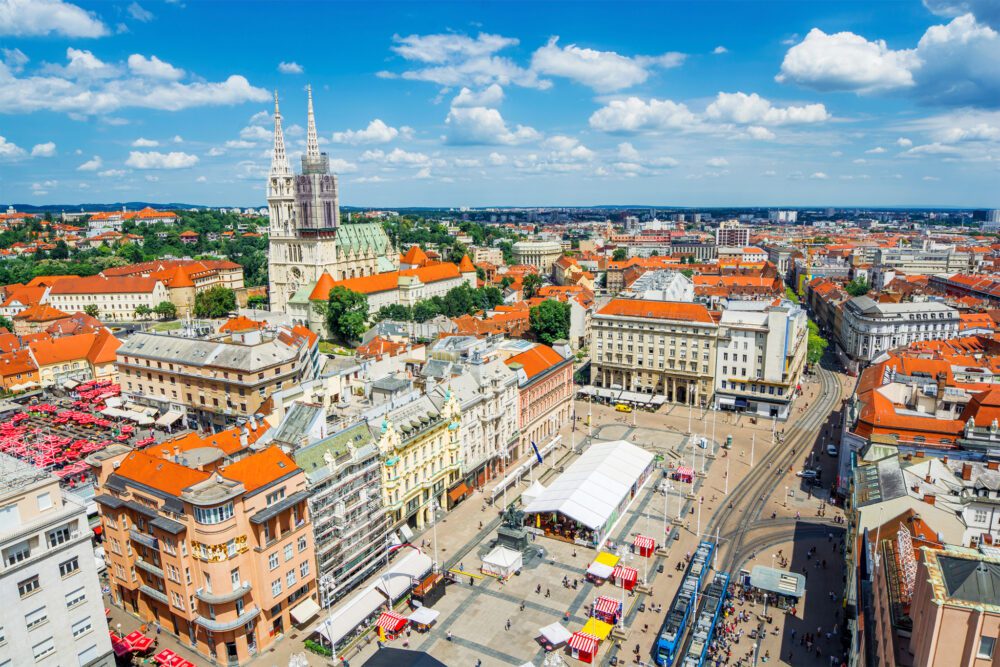
Introduction
Nestled along the slopes of Mount Medvednica, Zagreb, the capital city of Croatia exudes a charming blend of medieval architecture, a vibrant cultural scene, and lush greenery. As the country’s political, economic, and cultural hub, Zagreb offers a captivating fusion of history and modernity, making it a must-visit destination for travellers seeking an authentic European experience. With its winding cobblestone streets, bustling markets, and picturesque parks, Zagreb beckons visitors to explore its rich tapestry of attractions and immerse themselves in its dynamic atmosphere.
With roots dating back to Roman times, Zagreb boasts a storied history that is reflected in its diverse array of architectural landmarks and cultural institutions. From the medieval Upper Town with its iconic St. Mark’s Church and Lotrščak Tower to the elegant 19th-century buildings of the Lower Town, the city’s architectural ensemble tells the tale of its evolution over the centuries. Today, Zagreb buzzes with energy, offering visitors a plethora of museums, galleries, theatres, and restaurants to discover, ensuring there’s never a dull moment in this vibrant capital city. Whether strolling through the charming streets of the Old Town, savouring traditional Croatian cuisine in cosy cafes, or soaking in the panoramic views from its hilltop vistas, Zagreb promises an unforgettable experience for travellers of all interests and backgrounds.
Table of Contents
Map of the Best Things to Do in Zagreb
Zagreb Cathedral
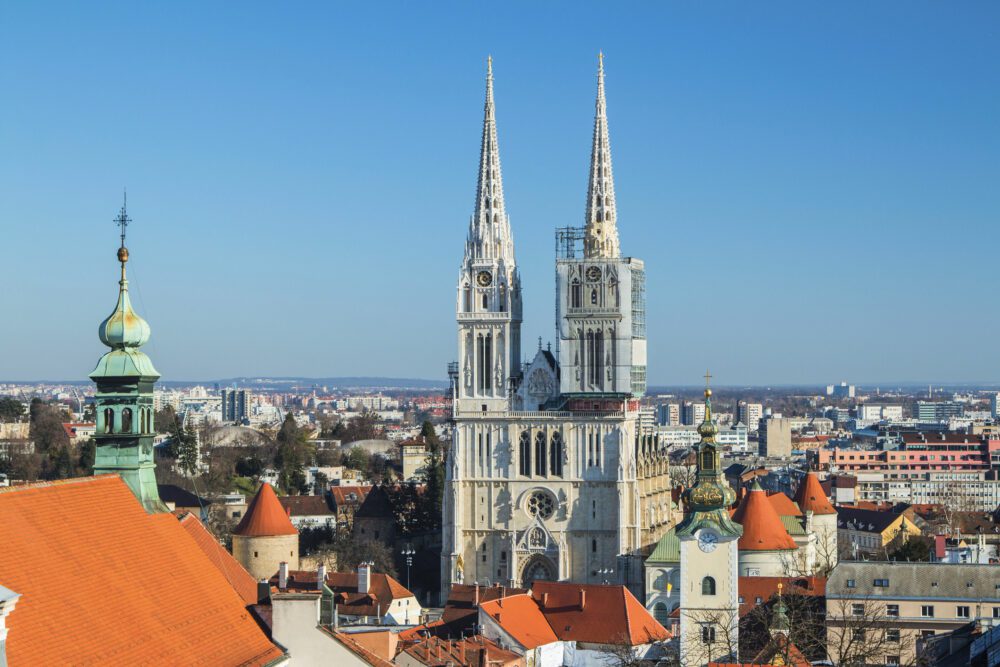
Standing proudly at the heart of Zagreb, the Zagreb Cathedral, also known as the Cathedral of the Assumption of the Blessed Virgin Mary, is a majestic symbol of the city’s rich cultural and religious heritage. Dating back to the 13th century, this iconic landmark showcases a stunning blend of Gothic and Renaissance architectural styles, with its twin spires soaring into the sky, dominating the city’s skyline. Despite enduring numerous reconstructions and renovations throughout its history, the cathedral remains a symbol of resilience and spiritual significance for locals and visitors alike.
Visitors to the Zagreb Cathedral can admire its intricate facade adorned with sculptural details and ornate portals. The interior boasts awe-inspiring vaulted ceilings, stained glass windows, and an impressive collection of religious artworks. Practical tips for exploring this historic site include dressing modestly and respectfully, as it is still an active place of worship. Additionally, visitors can climb the cathedral’s bell tower for panoramic views of Zagreb’s charming streets and surrounding landscape.
Dolac Market
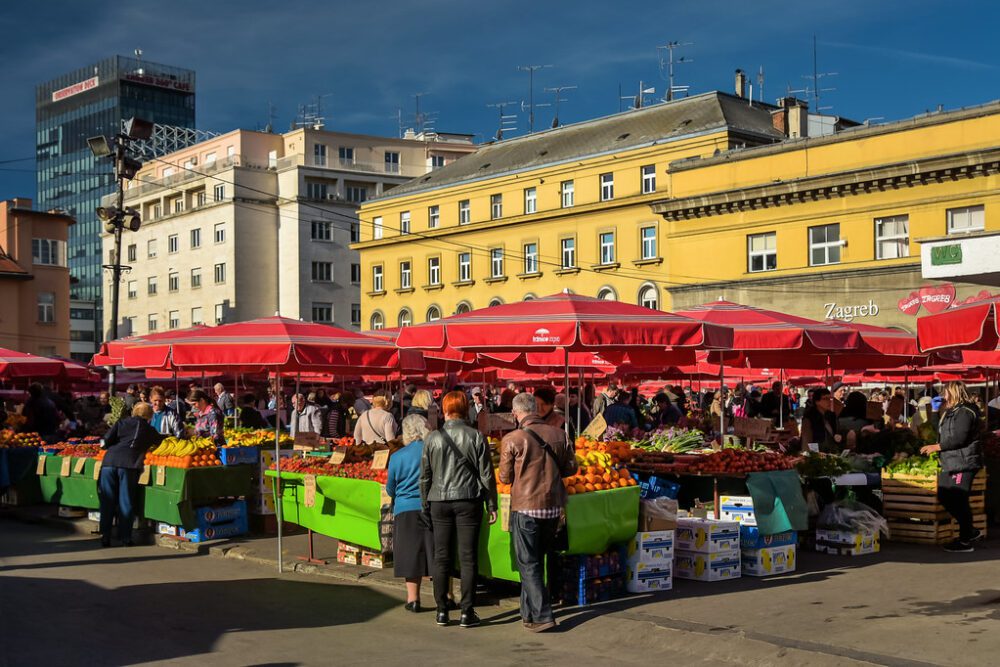
Nestled at the foot of the historic Upper Town, Dolac Market is a bustling hub of activity and a beloved institution in Zagreb. Dating back to the 20th century, this lively marketplace has been the beating heart of the city’s culinary scene for generations. Here, locals and visitors alike converge to peruse a vibrant array of fresh produce, meats, cheeses, flowers, and artisanal goods, creating a sensory feast for the senses. As one of the oldest and most iconic markets in Zagreb, Dolac Market offers a glimpse into traditional Croatian life and culture, providing an authentic and immersive experience for visitors.
Practical tips for exploring Dolac Market include arriving early in the morning to witness the market at its liveliest and to snag the freshest produce available. Visitors can also engage with local vendors, who are often friendly and eager to share their knowledge about the products on offer. For an even more enriching experience, consider joining a guided food tour that explores the market’s culinary delights and offers insights into Croatian gastronomy. Whether shopping for fresh ingredients, sampling local delicacies, or simply soaking in the vibrant atmosphere, a visit to Dolac Market is a must-do for anyone looking to experience the true essence of Zagreb’s culinary scene and culture.
Ban Josip Jelačić Square
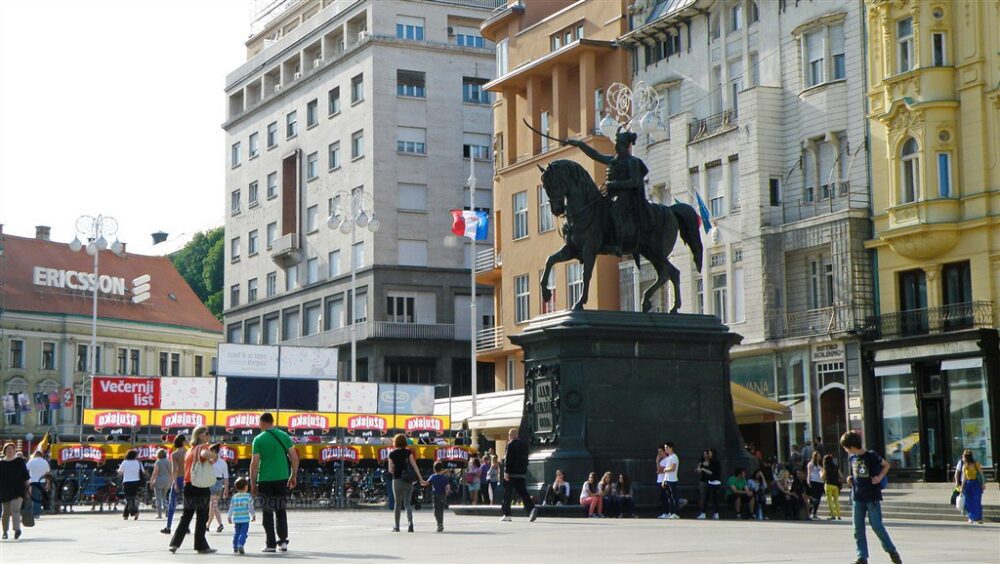
Ban Josip Jelačić Square stands as the central gathering point and historical heart of Zagreb, named after the revered Croatian Ban (viceroy) who played a pivotal role in the nation’s history. Surrounded by elegant buildings and bustling streets, this expansive square serves as a focal point for both locals and tourists alike. Historically, it has been a site of political rallies, cultural celebrations, and public gatherings, witnessing significant moments in Croatia’s history. At the centre of the square stands a grand equestrian statue of Ban Josip Jelačić, a symbol of Croatian independence and unity. Visitors can admire the statue’s imposing presence while taking in the lively atmosphere of the surrounding cafes, shops, and street performers.
Practical tips for exploring Ban Josip Jelačić Square include strolling around the perimeter and soaking in the architectural beauty of the surrounding buildings, which include historic landmarks such as the Manduševac Fountain and the iconic Zagreb tram. Additionally, visitors can climb to the top of the nearby Lotrščak Tower for panoramic views of the square and the city beyond. The square is also conveniently located near many of Zagreb’s other attractions, making it an ideal starting point for exploring the city.
Tkalčićeva Street
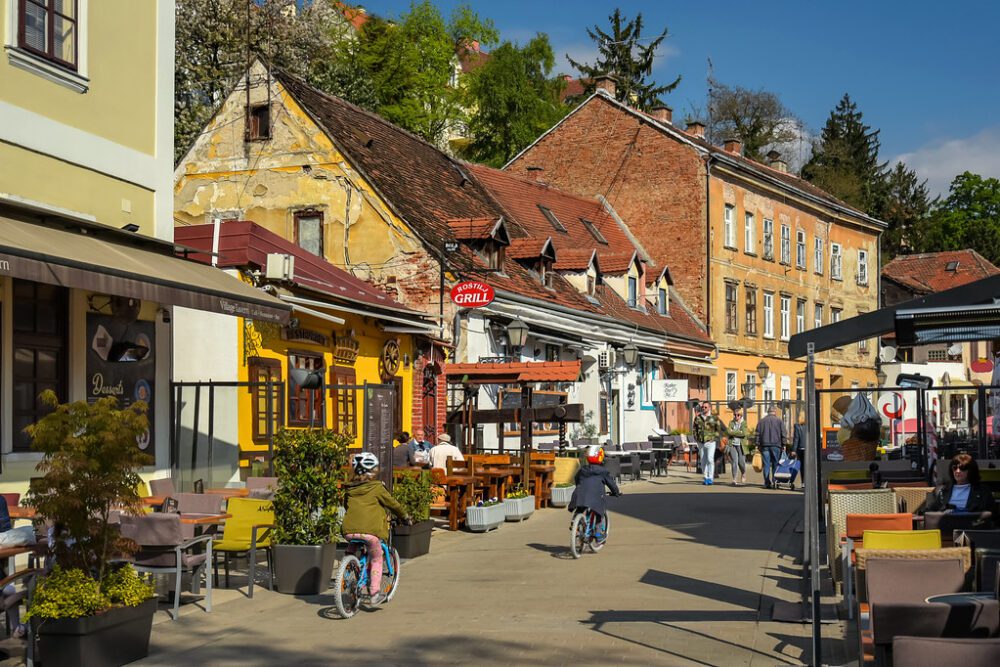
Tkalciceva Street, often referred to as the “cafe street” of Zagreb, is a charming cobblestone thoroughfare lined with vibrant cafes, restaurants, and boutiques. Named after the Tkalčić family, who were prominent local landowners in the 18th century, this bustling pedestrian zone exudes a lively atmosphere and rich historical charm. Originally a stream separating two settlements, Tkalciceva Street has evolved over the centuries into a bustling hub of activity, drawing both locals and tourists alike with its inviting ambience and picturesque surroundings. Today, it stands as one of Zagreb’s most popular destinations, offering visitors a delightful blend of traditional Croatian architecture, colourful facades, and a diverse culinary scene.
Practical tips for exploring Tkalciceva Street include taking the time to wander leisurely along its length and admiring the historic buildings and vibrant street art that adorn its walls. Visitors can sample delicious Croatian cuisine at one of the many restaurants and cafes that line the street, from traditional dishes like Ćevapi and Štrukli to international fare and gourmet treats. The street comes alive in the evenings, with live music performances, bustling crowds, and a convivial atmosphere that makes it the perfect spot for a night out on the town. Additionally, Tkalciceva Street is conveniently located near many of Zagreb’s other attractions, including the Dolac Market and Ban Josip Jelačić Square, making it an ideal starting point for exploring the city’s historic centre.
Upper Town (Gornji Grad)
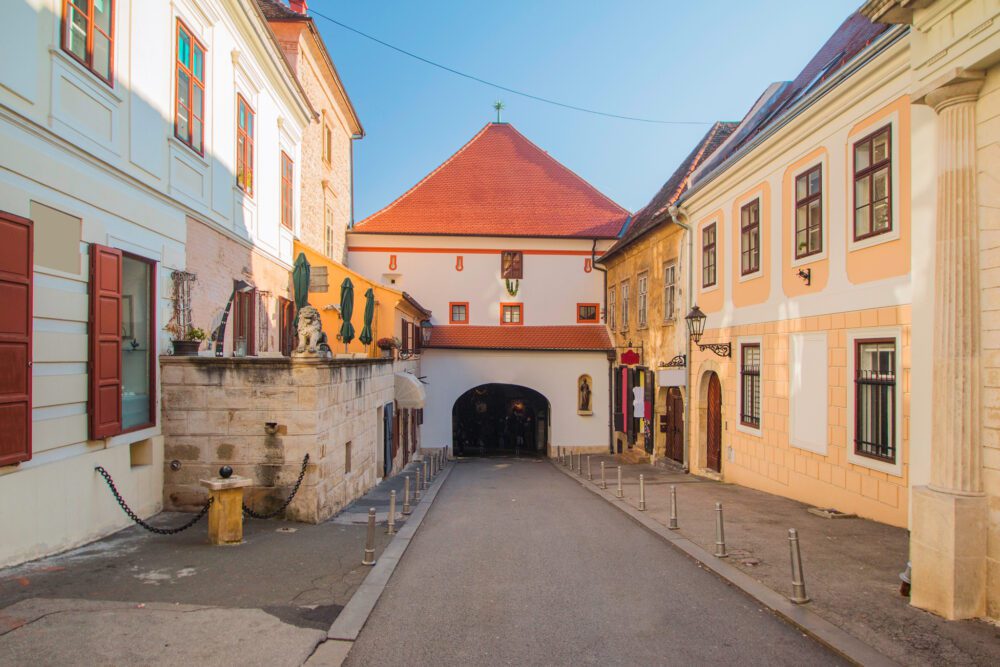
Perched atop a hill overlooking the lower city, Zagreb’s Upper Town, or Gornji Grad, is a historic district steeped in centuries of tradition and culture. Dating back to medieval times, this charming area is characterized by narrow cobblestone streets, quaint squares, and well-preserved architecture that reflects its rich heritage. Visitors to the Upper Town can explore landmarks such as St. Mark’s Church, known for its colourful tiled roof depicting the coat of arms of Zagreb and Croatia, and the Lotrščak Tower, which offers panoramic views of the city from its observation deck. The Upper Town also houses the Croatian Parliament, the Government, and many museums, including the Museum of Broken Relationships, which showcases personal mementoes and stories of lost love. Steeped in history and brimming with character, the Upper Town offers a captivating glimpse into Zagreb’s past and present.
Practical tips for exploring the Upper Town include wearing comfortable footwear, as the area’s hilly terrain can be challenging to navigate. Visitors can access the Upper Town via the historic funicular, which connects the lower and upper parts of the city and offers a scenic ride with breathtaking views along the way. Once in the Upper Town, travellers can wander through its charming streets at their own pace, taking in the sights and sounds of this atmospheric neighbourhood. Additionally, guided walking tours are available for those seeking a deeper understanding of the area’s history and landmarks.
The Lotrščak Tower

Standing proudly atop the southern gate of Zagreb’s historic Upper Town, Lotrščak Tower is an iconic symbol of the city’s medieval past. Built in the 13th century to defend against invading forces, this imposing structure has witnessed centuries of history and played a crucial role in Zagreb’s defence strategy. One of the tower’s most famous features is its Grič cannon, which has been firing daily since the 19th century, marking noon and harkening back to a time when such signals were essential for coordinating activities within the city. Visitors to Lotrščak Tower can climb its narrow staircase to reach the top, where they are rewarded with panoramic views of Zagreb’s charming streets, historic landmarks, and lush greenery stretching out below.
Practical tips for visiting Lotrščak Tower include checking the cannon firing schedule in advance to witness this unique tradition. The tower is open to visitors throughout the day, and tickets can be purchased on-site. It’s advisable to arrive early to avoid crowds, especially during peak tourist seasons. Additionally, the area surrounding the tower offers plenty of opportunities for exploration, with quaint cafes, shops, and historic sites waiting to be discovered.
Museum of Broken Relationships
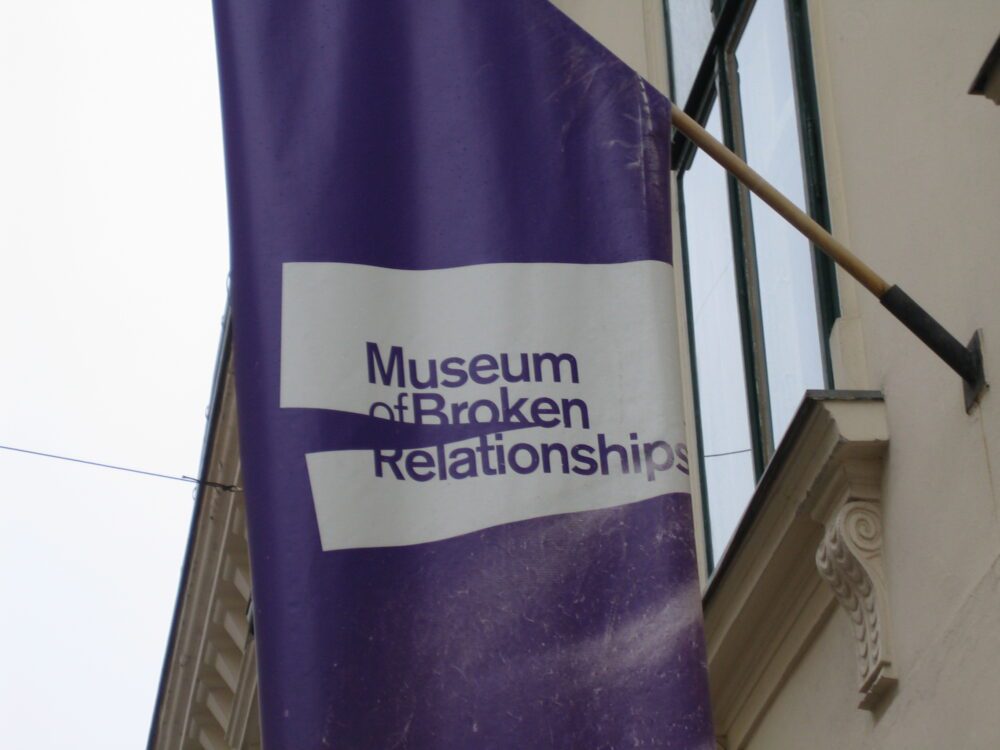
The Museum of Broken Relationships in Zagreb is a unique and emotionally poignant institution that explores the universal experience of heartbreak and loss. Founded by artists Olinka Vištica and Dražen Grubišić, the museum began as a travelling exhibition in 2006 before finding a permanent home in Zagreb’s Upper Town. Its collection consists of personal items donated by individuals from around the world, each accompanied by a brief story detailing the relationship they symbolize. From letters and photographs to everyday objects, these artefacts offer a deeply personal insight into the various forms of human connection and the emotions tied to their dissolution.
Practical tips for visiting the Museum of Broken Relationships include allocating enough time to explore the exhibits thoroughly, as each item has its own story worth contemplating. Visitors should also be prepared for an emotional experience, as the museum’s exhibits often evoke feelings of empathy, nostalgia, and reflection. Additionally, it’s advisable to check the museum’s opening hours in advance and consider purchasing tickets online to avoid long queues, especially during peak tourist seasons. For those seeking a thought-provoking and cathartic experience while in Zagreb, the Museum of Broken Relationships offers a unique opportunity to connect with the shared aspects of human experience and find solace in the stories of others.
St. Mark’s Church
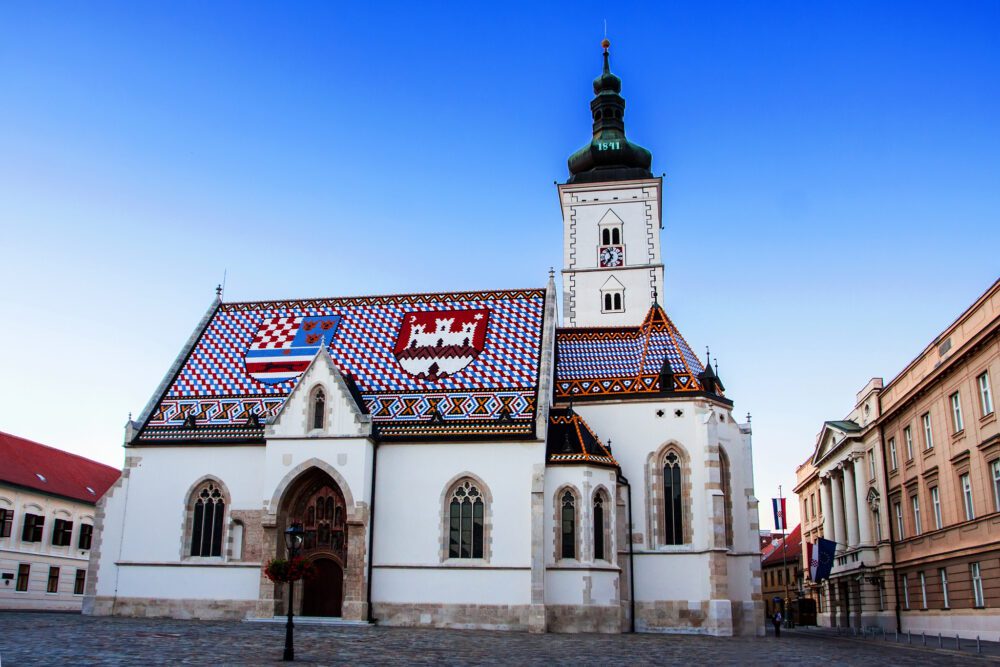
St. Mark’s Church, situated in the Upper Town of Zagreb, is a historic landmark renowned for its stunning Gothic architecture and vibrant tiled roof. Dating back to the 13th century, the church has undergone several renovations and expansions over the centuries, blending Romanesque, Baroque, and Gothic elements. One of its most distinctive features is the colourful tiled roof, adorned with the coats of arms of Zagreb and Croatia, as well as the emblem of the Triune Kingdom of Croatia, Slavonia, and Dalmatia. The interior of St. Mark’s is equally impressive, with intricate frescoes, altars, and sculptures that showcase the rich artistic heritage of Zagreb.
Practical tips for visiting St. Mark’s Church include checking the opening hours, as the church may be closed to visitors during religious services or events. Guided tours are available for those interested in learning more about the church’s history and significance, providing insights into its architecture and artistic treasures. Visitors should also take the time to explore the surrounding St. Mark’s Square, which is home to other notable landmarks such as the Croatian Parliament and the Government Palace.
Grič Tunnel
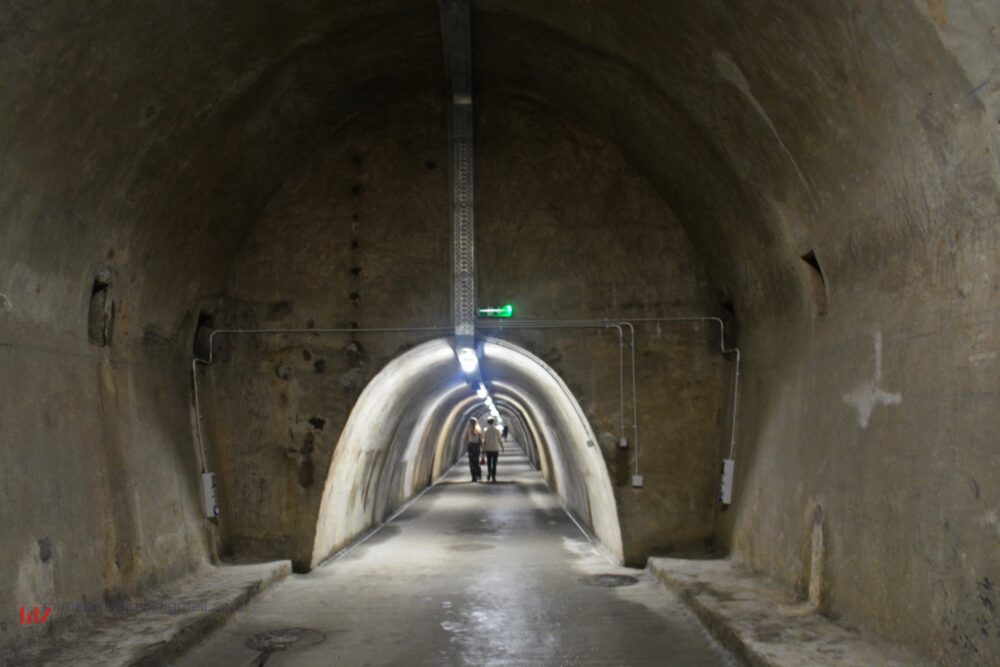
The Grič Tunnel, a hidden gem beneath the streets of Zagreb, holds a fascinating history and offers a unique experience for visitors. Originally constructed as a World War II bomb shelter, the tunnel was repurposed in the 1990s as a shelter during the Croatian War of Independence. Today, it serves as a pedestrian passageway connecting the Upper and Lower Towns of Zagreb, adorned with art installations and exhibitions that reflect its wartime past. Walking through the Grič Tunnel is like stepping back in time, with its dimly lit corridors and remnants of its wartime use evoking a sense of history and resilience.
Practical tips for visiting the Grič Tunnel include wearing comfortable shoes, as the tunnel can be quite lengthy to traverse on foot. Additionally, visitors should be aware of the opening hours, as the tunnel may have limited access or special events at certain times. Guided tours are available for those interested in learning more about the tunnel’s history and significance, providing insights into its wartime use and the city’s resilience during difficult times.
Maksimir Park
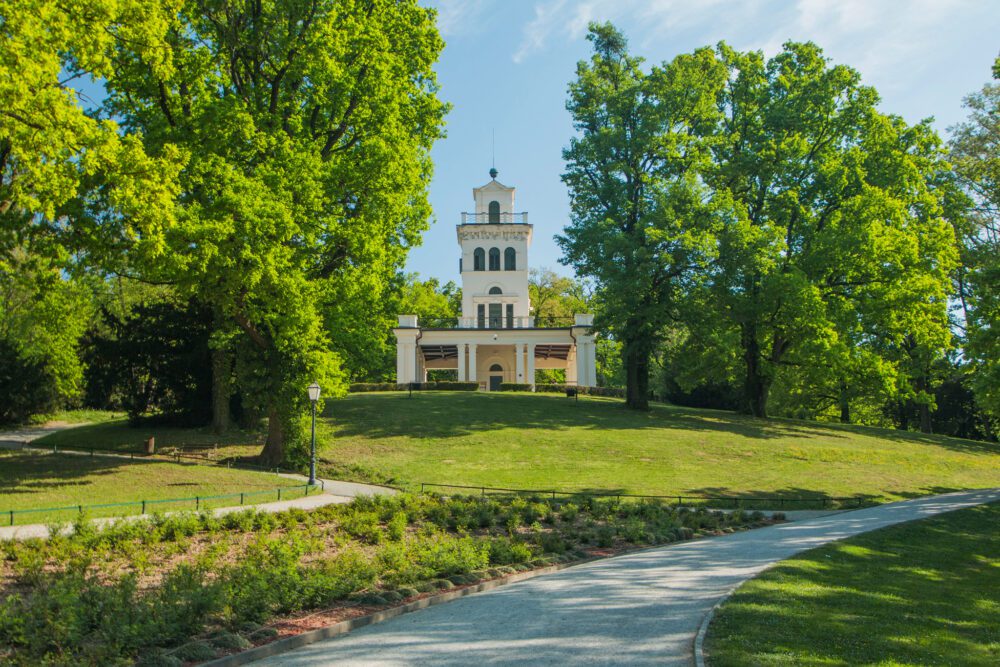
Maksimir Park stands as one of Zagreb’s most beloved green spaces, offering a serene retreat from the bustling city life. Established in the late 18th century by the bishop of Zagreb, Maksimir was one of the first public parks in Europe, designed in the English landscape style. Spanning over 316 hectares, the park features winding paths, picturesque lakes, and lush forests, providing ample opportunities for leisurely strolls, picnics, and outdoor activities. One of its highlights is the Maksimir Zoo, Croatia’s oldest zoo, which houses a diverse collection of animals and offers educational programs for visitors of all ages.
For those looking to explore Maksimir Park, practical tips include wearing comfortable walking shoes and bringing along a picnic to enjoy amidst the park’s scenic surroundings. The park is easily accessible by public transportation or car, with several entrances located throughout the surrounding neighbourhoods. Visitors can also rent bicycles or join guided tours to explore the park’s highlights and learn about its rich history and biodiversity. Whether seeking a peaceful escape or a day of outdoor adventure, Maksimir Park offers something for everyone to enjoy in the heart of Zagreb.
Mirogoj Cemetery

Mirogoj Cemetery stands as a poignant testament to Zagreb’s rich cultural and religious heritage, as well as its unique architectural beauty. Established in the late 19th century, Mirogoj is renowned for its stunning arcades, monumental tombstones, and serene landscaped gardens, designed by renowned architect Hermann Bollé. Serving as the final resting place for many prominent Croatians, including artists, politicians, and cultural figures, the cemetery holds significant historical and cultural importance. Its diverse range of architectural styles, from neo-Renaissance to Art Nouveau, reflects the city’s multicultural influences and offers visitors a glimpse into Zagreb’s past.
Practical tips for visiting Mirogoj Cemetery include wearing respectful attire and observing the peaceful atmosphere of the grounds. Visitors can explore the cemetery’s intricate pathways and admire its ornate mausoleums and chapels, which showcase remarkable craftsmanship and artistic detail. Guided tours are available for those interested in learning more about the cemetery’s history and notable residents.
Croatian National Theatre
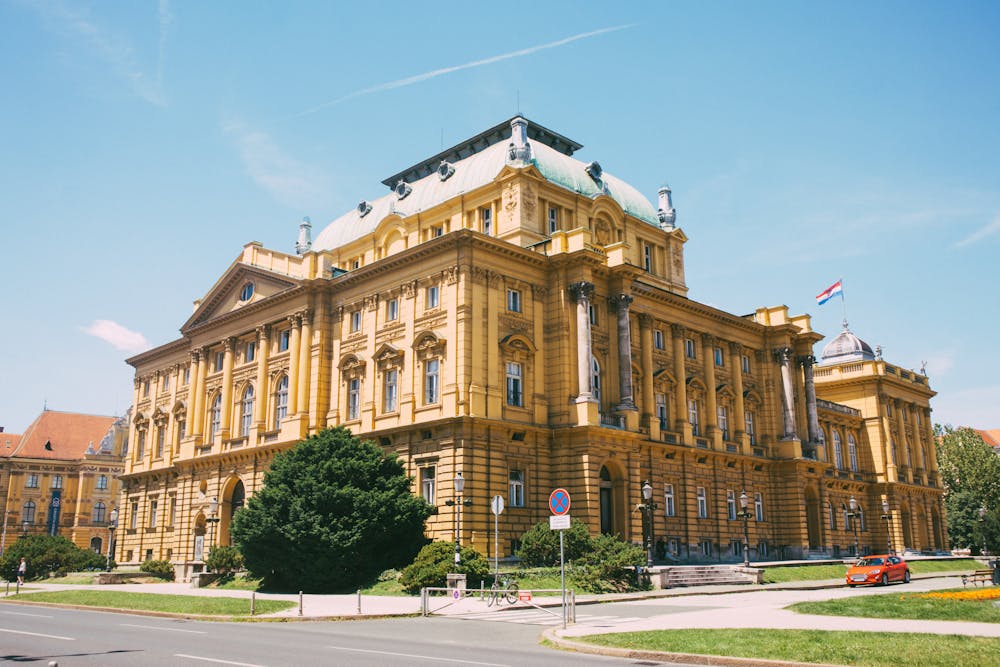
The Croatian National Theatre, often referred to as Hrvatsko Narodno Kazalište or HNK Zagreb, stands as one of Zagreb’s most prominent cultural institutions, showcasing the nation’s rich theatrical heritage. Founded in 1836, the theatre has played a vital role in promoting Croatian literature, music, and performing arts. Its stunning neo-baroque building, designed by renowned Austrian architects Ferdinand Fellner and Hermann Helmer, is an architectural masterpiece that dominates the city’s skyline. With its opulent interior adorned with intricate frescoes, lavish chandeliers, and plush red velvet seating, the theatre offers a truly immersive and elegant setting for opera, ballet, drama, and classical music performances.
Practical tips for enjoying a performance at the Croatian National Theatre include booking tickets in advance, especially for popular productions, and arriving early to soak in the ambience of the historic building. Although there is no strict dress code for evening performances, smart attire is recommended. Visitors can also take advantage of guided tours to learn more about the theatre’s history, architecture, and behind-the-scenes operations.
Jarun Lake
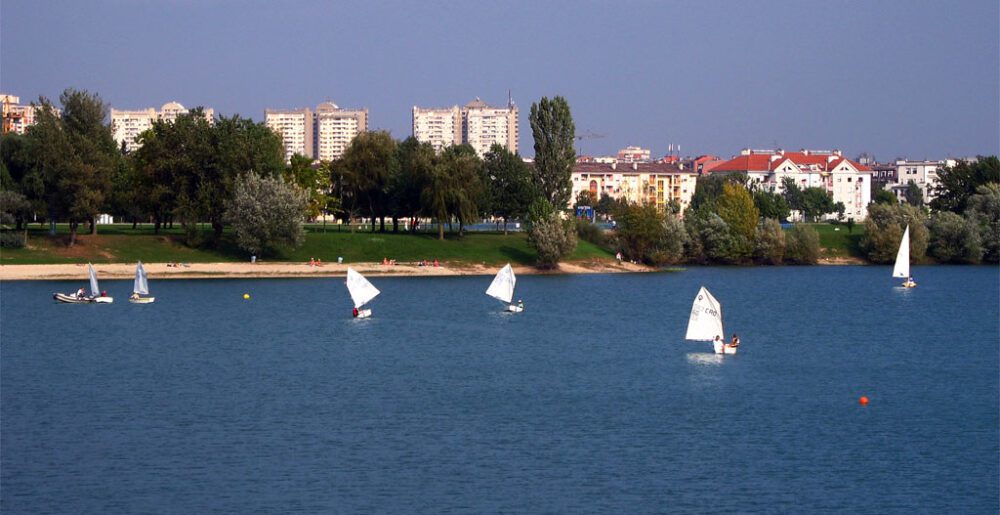
Jarun Lake, nestled in the southwestern part of Zagreb, is a sprawling recreational area beloved by locals and visitors alike. Originally created as part of a flood control project in the 1970s, Jarun Lake has evolved into a vibrant hub for outdoor activities and water sports. With its clear blue waters surrounded by lush greenery and scenic walking paths, it offers a picturesque escape from the urban bustle of the city. The lake is divided into two main sections, Veliko Jarun (Big Jarun) and Malo Jarun (Small Jarun), each offering a range of facilities and attractions.
Practical tips for enjoying a day at Jarun Lake include renting a paddleboat, kayak, or stand-up paddleboard to explore the tranquil waters. Visitors can also relax on one of the lake’s beaches, sunbathe, or enjoy a refreshing swim during the warmer months. Additionally, the lake’s promenade is lined with cafes, bars, and restaurants offering a variety of refreshments and snacks, making it an ideal spot for leisurely strolls and enjoying the vibrant atmosphere. For those seeking more adventure, there are facilities for beach volleyball, basketball, and even bungee jumping.
Botanical Gardens
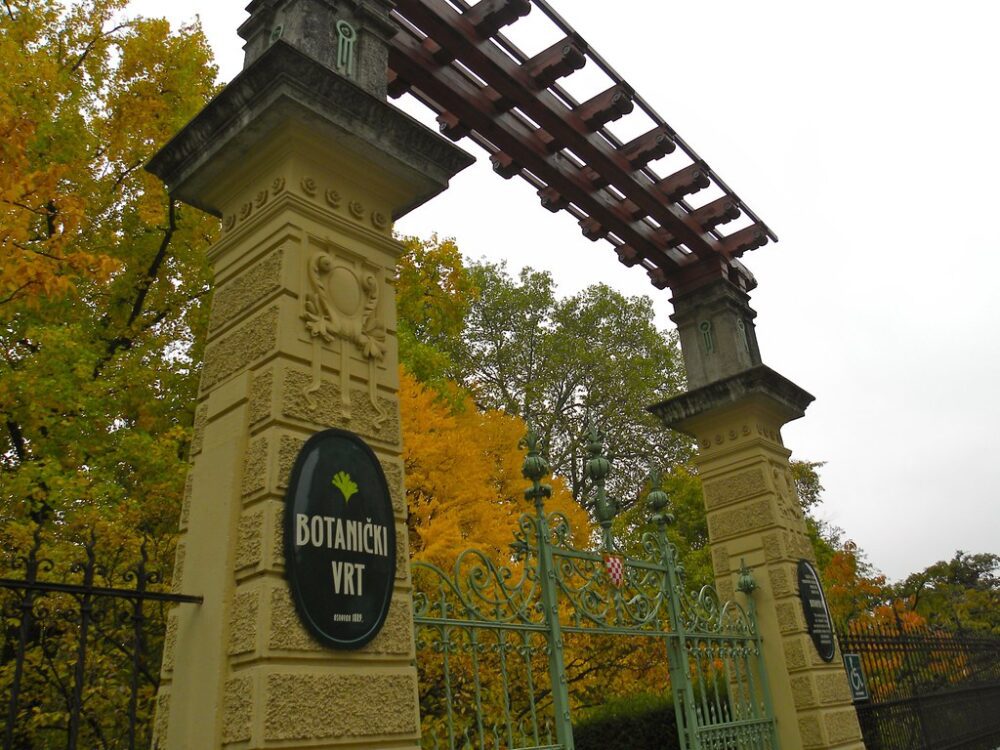
The Botanical Garden of the Faculty of Science in Zagreb is a serene oasis nestled in the heart of the city, offering visitors a peaceful retreat amid lush greenery and vibrant blooms. Established in 1889, the garden spans over four hectares and is home to an extensive collection of plant species from around the world, including rare and endangered varieties. Its rich history dates back to the late 19th century when it was founded by the University of Zagreb’s Faculty of Science with the aim of providing a space for research, education, and conservation of plant diversity.
Practical tips for exploring the botanical gardens include taking a leisurely stroll along its winding paths to discover the diverse plant collections, which are organized into thematic sections such as the systematic garden, rockery, and aquatic garden. Visitors can also join guided tours led by knowledgeable staff to learn more about the garden’s history, significance, and the various plant species it houses. Additionally, the garden often hosts educational workshops, exhibitions, and events throughout the year, providing opportunities for visitors of all ages to engage with nature and learn about topics such as sustainable gardening and biodiversity conservation.
Plitvice Lakes National Park
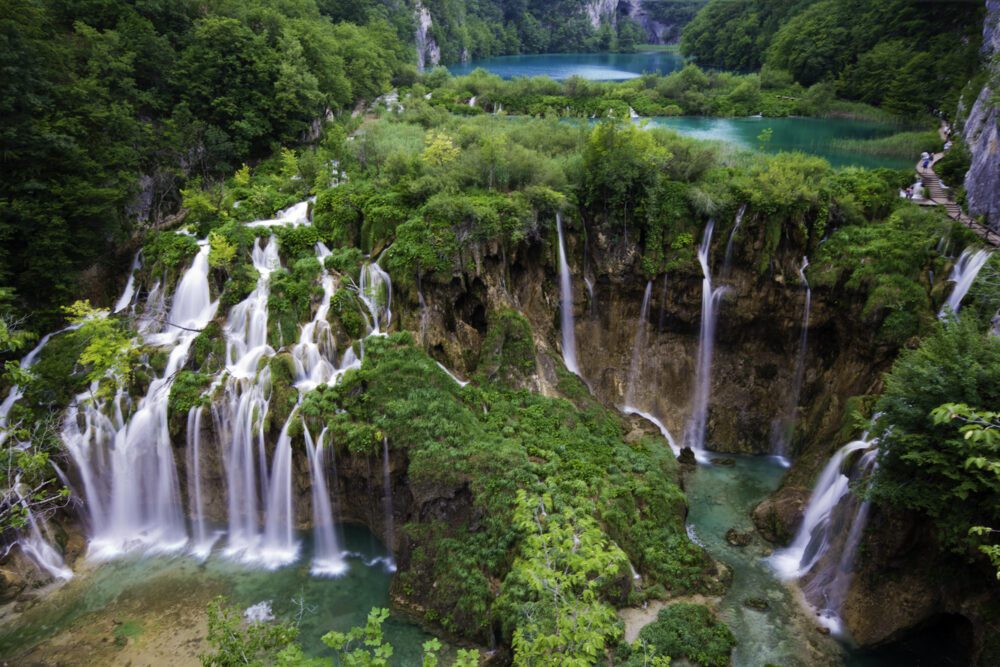
Plitvice Lakes National Park is an incredibly beautiful and easily accessible day trip from Zagreb. Just a two-hour drive away, Plitvice is overflowing with natural wonders that will take your breath away. The park is home to a series of interconnected waterfalls and lakes that flow through dense forests and rolling hills, creating an unforgettable landscape.
The Plitvice Lakes are formed by a series of natural processes that have created terraced waterfalls and crystal-clear pools. The water is a bright shade of blue-green, creating a stunning contrast against the surrounding greenery. Visitors can explore the park along a network of boardwalks and pathways that offer stunning views of the waterfalls, lakes, and forests.
If you’re feeling adventurous, there are kayaking trips available through the lakes so you can experience them up close and personal. Be sure to keep an eye out for native wildlife like bears and deer as they roam freely throughout the park.
Conclusion
As you conclude your exploration of Zagreb, you’ll likely find yourself enamoured with the city’s rich history, vibrant culture, and charming ambience. From its historic landmarks and cultural attractions to its picturesque parks and bustling markets, Zagreb offers a diverse array of experiences that cater to every interest and preference. Whether you’re wandering through the cobblestone streets of the old town, admiring the stunning architecture of its cathedrals and palaces, or sampling delicious Croatian cuisine at local eateries, there’s no shortage of memorable moments to be had in this enchanting city.
Whether you’re a history buff, an art enthusiast, or simply someone who enjoys immersing themselves in the beauty of nature, Zagreb has something to offer everyone. With its warm hospitality, vibrant atmosphere, and wealth of attractions, it’s no wonder that Zagreb has become an increasingly popular destination for travellers from around the world. So whether you’re planning a weekend getaway or a longer vacation, be sure to include Zagreb on your itinerary and experience firsthand all that this captivating city has to offer.
